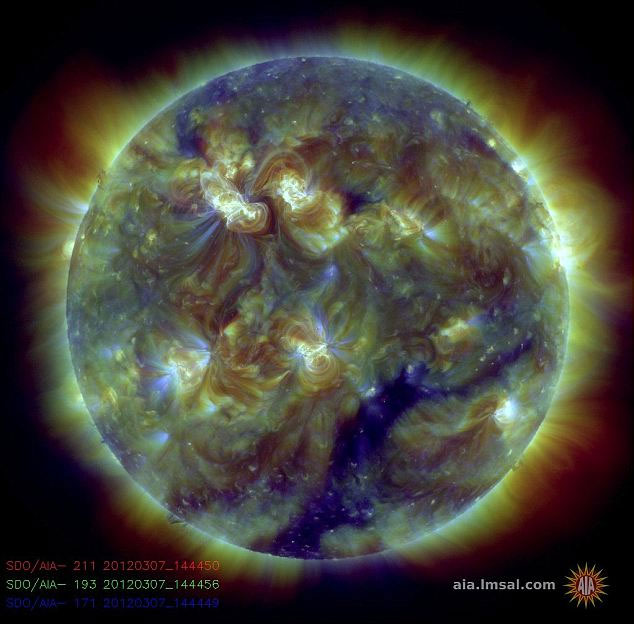Two storms from strong down to earth
Scientists warn that power transmission, artificial satellite positioning and aircraft orientation may be disturbing in the next few days after two extremely strong storms hit the globe yesterday.
Two intense storms from a battle - a flare of the sun on March 4 and March 6, respectively. At speeds of up to 3.2 million km / h, they began to land on Earth from March 7, the BBC reported.
BBC said that these are the two strongest storms in the last 5 years and their impact will be most evident in the polar regions. As a result of magnetic storms, aurora near the Arctic will appear more. The aurora occurs because particles that charge from the sun rush into the Earth's atmosphere at tremendous speed. During migration, charged particles crash into oxygen and nitrogen atoms, causing their energy levels to increase. As a result, oxygen and oxygen atoms emit colorful light.

The aurora will appear more in the next few days due to the impact of magnetic storms.
However, many other activities will be badly affected. For example, in the next few days it is possible that planes will have to change direction to avoid the impact of storms from the polar regions. Astronauts on the International Space Station must also be wary of magnetic storms.
"The charged particles from the sun have invaded the atmosphere," commented Joseph Kunches, an expert with the US Marine and Atmospheric Administration (NOAA).
NOAA reports charged particles from the sun rushing into the Earth's atmosphere at a rate of 6.4 million km / h and magnetic storms that will last until March 9 in US time.
Magnetic storms occur when charged particles emanating from the solar wind act on the earth's magnetic induction lines. They can paralyze the operation of artificial satellites and even attack power networks on the ground. Scientists have calculated that magnetic storms reach a maximum of 11 years. Magnetic storms can cause many consequences - such as causing power outages, crippling the operation of artificial satellites and telecommunications systems. Long-distance telephone communications in the state of Illinois, the United States was interrupted by storms in 1972. In April 2010, Intelsat's Galaxy 15 satellite stopped permanently because of the solar storm.
- Tropical depressions are likely to become strong storms towards the North
- The anger of Earth's mother
- The culprit causes strong storms hidden in the atmosphere
- Tropical depressions enter the South China Sea, potentially strong into storms
- Winter storm attacks the US, 13 people die
- Strong storms appeared on the East Sea
- Typhoon Nari approached the waters of the central provinces
- Solar Storm is about to reach Earth in the near future: the risk of attacking the electrical and satellite systems
- Danas storms level 10 toward the East Sea
- A strong solar storm occurred
- Storm Nari threatened, many Central people evacuated
- El Nino comes back, hot summers and storms are stronger
 Van Allen's belt and evidence that the Apollo 11 mission to the Moon was myth
Van Allen's belt and evidence that the Apollo 11 mission to the Moon was myth The levels of civilization in the universe (Kardashev scale)
The levels of civilization in the universe (Kardashev scale) Today Mars, the sun and the Earth are aligned
Today Mars, the sun and the Earth are aligned The Amazon owner announced a secret plan to build a space base for thousands of people
The Amazon owner announced a secret plan to build a space base for thousands of people